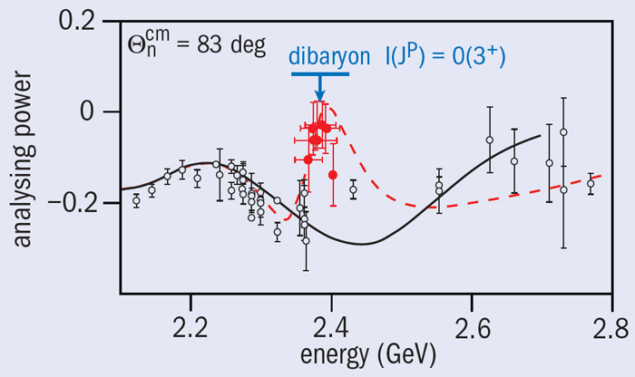
Experiments at the Jülich Cooler Synchrotron (COSY) have found compelling evidence for a new state in the two-baryon system, with a mass of 2380 MeV, width of 80 MeV and quantum numbers I(JP) = 0(3+). The structure, containing six valence quarks, constitutes a dibaryon, and could be either an exotic compact particle or a hadronic molecule. The result answers the long-standing question of whether there are more eigenstates in the two-baryon system than just the deuteron ground-state. This fundamental question has been awaiting an answer since at least 1964, when first Freeman Dyson and later Robert Jaffe envisaged the possible existence of non-trivial six-quark configurations.

The new resonance was observed in high-precision measurements carried out by the WASA-at-COSY collaboration. The first signals of the new state had been seen before in neutron–proton collisions, where a deuteron is produced together with a pair of neutral pions. Now this state has also been observed in polarized neutron–proton scattering and extracted using the partial-wave analysis technique – the generally accepted ultimate method to reveal a resonance. In the SAID partial-wave analysis, the inclusion of the new data produces a pole in the 3D3 partial wave at (2380±10 – i 40±5) MeV.
The mass of the new state is amazingly close to that predicted originally by Dyson, based on SU(6) symmetry breaking. Moreover, recent state-of-the-art Faddeev calculations by Avraham Gal and Humberto Garcilazo reproduce the features of this new state very well. The quantum numbers favour this state as a dibaryon resonance – the “inevitable” non-strange dibaryon predicted by Terry Goldman and colleagues in 1989.
Further reading
P Adlarson et al. 2014 Phys. Rev. Lett. 112 202301.





